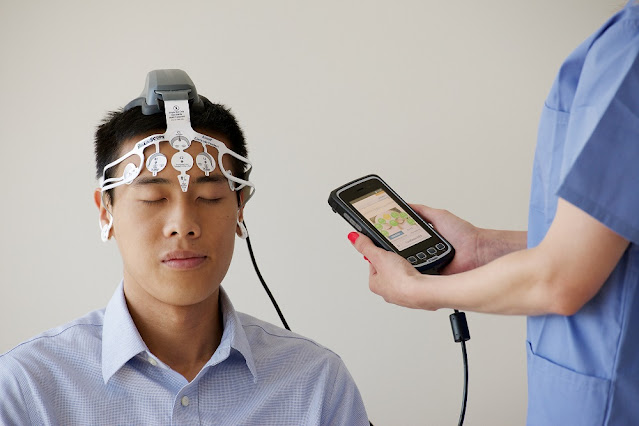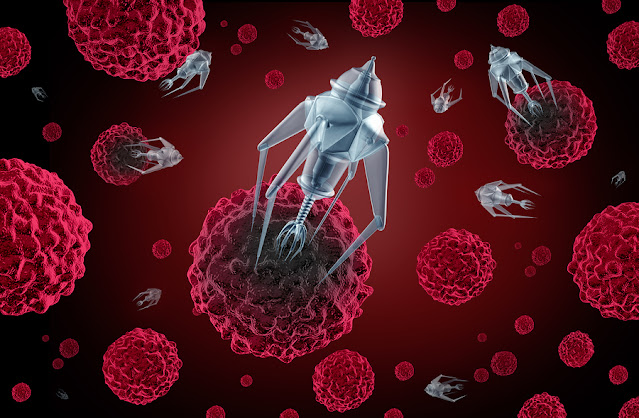Targeted Drug Delivery: The Future of Medical Treatment
 |
| Targeted Drug Delivery |
Developments in Nanotechnology Enable Precise
Medication Delivery
Advancements in nanotechnology have opened up new possibilities for improving
the effectiveness and safety of drug treatments. By engineering drugs at the
nanoscale, scientists have gained much finer control over where medications are
delivered in the body. This targeted drug delivery approach aims to provide
significant benefits over traditional treatments.
Reducing Unwanted Side Effects
One of the major challenges with conventional drug therapies is that they often
do not discriminate between healthy and diseased cells. As a result,
medications can induce side effects by also acting on healthy tissues. With
targeted delivery methods, drugs are shielded until they reach the intended
site of action in the body. Nanoparticles, viral vectors, liposomes and other
nanocarriers can transport medications directly to tumors, infected cells or
other problem areas while avoiding exposure to other regions. This
site-specific action helps minimize potential side effects.
Conventional drugs also face issues with low bioavailability, as much of the
dose is lost or metabolized before reaching the target location. Nanocarriers
protect therapeutic compounds from degradation in the gastrointestinal tract
and circulation. They can even utilize cellular pathways like receptor-mediated
endocytosis to actively deliver drugs into cells. All of this results in a
greater percentage of the administered dose being absorbed by diseased tissues
rather than getting wasted. Computer simulations also predict higher
intracellular drug concentrations through targeted methods.
Achieving Sustained Release for
Long-Term Therapy
For chronic conditions requiring long-term medication, Targeted
Drug Delivery enables more controlled release of drugs over extended
time periods. Nanocarriers made of biodegradable polymers break down gradually
in a predictable manner, sustaining therapeutic levels of encapsulated drug
molecules in the body for days, weeks or even months. This intermittent dosing
provides better treatment adherence for patients and caregivers compared to
multiple daily pills. It could potentially transform therapies for cancer,
diabetes, cardiovascular issues and other chronic diseases.
Overcoming Biological Barriers Like
Multidrug Resistance
A major problem cancer cells can develop is multidrug resistance where they
evolve mechanisms to pump out foreign substances like chemotherapeutics. Targeted
nanoparticles may help bypass such defenses. For example, they can home in on
molecular markers uniquely expressed on tumor blood vessels and infiltrate the
tumor microenvironment. Once inside diseased tissues, controlled release of
drugs maintains therapeutic levels inside cancerous cells long enough to
overcome their mutated efflux pumps.
Realizing the Full Therapeutic Potential
of Existing Drugs
By solving issues like inadequate bioavailability, short half-life and
multi-drug resistance, targeted delivery enables drug molecules to reach their
full therapeutic potential. This approach could potentially breathe new life
into existing drug compounds that previously did not live up to expectations
due to poor absorption or rapid clearance issues. It offers an effective
strategy for drug repurposing and helps address the pressing need for new
treatments, especially in oncology.
Advancing Individualized Treatment
Through Companion Diagnostics
With targeted delivery methods, drugs can be paired with companion diagnostics
tests that identify patient groups most likely to benefit. Biomarker detection
helps deliver the right therapy to the right population, advancing the promise
of precision and personalized medicine. It ensures medications reach only patients
with the correct molecular signature rather than a one-size-fits-all approach.
This enhances clinical outcomes and lowers healthcare costs by preventing
needless treatment of non-responders.
Expanding Application Possibilities for
Macromolecular Drugs
The size and instability issues of many biologic drugs and oligonucleotides
have limited their clinical use so far. However, nanocarriers can protect these
macromolecules from degradation and facilitate their intracellular delivery.
This makes viable new therapies based on molecules previously considered
unsuitable for drug development due to size constraints. Examples already in
clinical trials include protein and mRNA treatments for cancer, delivered using
lipid nanoparticles.
Overcoming the Delivery Challenge
Represents the Final Frontier in Drug Development
Despite major progress in target identification and drug candidate discovery,
solving the delivery problem to sites of disease continues to present a major
scientific hurdle. Targeted approaches address this critical bottleneck and
bring us closer to realizing the full promise of personalized healthcare. As
the technology matures, upcoming advances in materials, molecular engineering
and manufacturing are expected to further optimize the effectiveness and
affordability of targeted delivery methods. Their widespread clinical adoption
could transform how we prevent and manage various chronic illnesses in the
decades ahead.
Future Outlook for Targeted Drug
Delivery
Overall, the application of nanotechnology promises to revolutionize drug
development and radically improve treatment outcomes. Continued research into
novel nanocarriers, active targeting ligands, controlled release mechanisms and
manufacturing processes will see the field progress from pre-clinical studies
into approvals and commercial availability across more therapy areas.
Successful targeted delivery platforms are also poised to create new
multi-billion dollar markets and reshape the pharmaceutical industry structure
over the next 10-15 years. As evidence for their clinical effectiveness mounts,
these technologies may establish a new standard of care and push many disease
types from acute to chronic manageable conditions through more convenient and
cost-effective long-term drug administration. With further innovations, the
full transformative potential of precision medicines could be realized through
precisely-targeted drug treatments.
Get
more insights on This Topic- Targeted
Drug Delivery
Explore
More Articles - Kidney
Cancer Drugs Market



Comments
Post a Comment